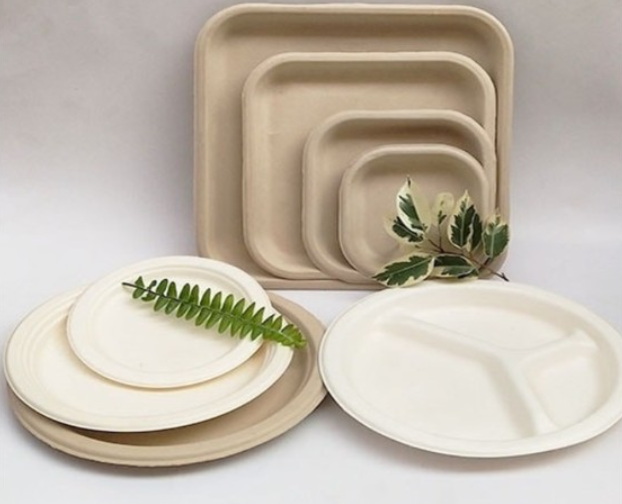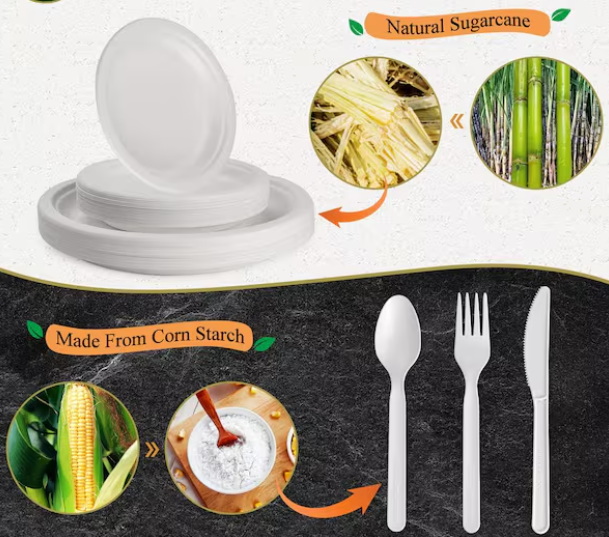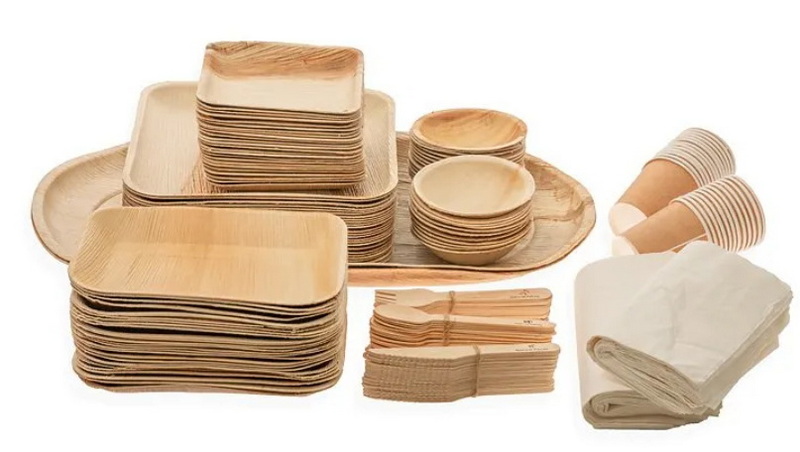
Content Menu
● Introduction to Recyclable Disposable Tableware
>> Materials Used in Recyclable Disposable Tableware
● Benefits of Recyclable Disposable Tableware
>> Environmental Benefits
>> Practical Advantages
● Top Brands for Recyclable Disposable Tableware
● Applications of Recyclable Disposable Tableware
>> Events and Gatherings
>> Daily Use
● Challenges and Future Developments
● Conclusion
● FAQ
>> 1. What Materials Are Used in Recyclable Disposable Tableware?
>> 2. How Do Biodegradable Plates Benefit the Environment?
>> 3. Are All Paper Plates Recyclable?
>> 4. What Are the Practical Advantages of Using Recyclable Disposable Tableware?
>> 5. How Can Businesses Promote Sustainability with Recyclable Disposable Tableware?
In recent years, the demand for recyclable disposable tableware has increased significantly due to growing environmental concerns and the need to reduce plastic waste. Traditional plastic tableware not only contributes to pollution but also takes hundreds of years to decompose. As a result, businesses and individuals are turning to eco-friendly alternatives that are both sustainable and practical. This article explores the best options for recyclable disposable tableware, highlighting their benefits, materials, and applications.

Introduction to Recyclable Disposable Tableware
Recyclable disposable tableware includes a variety of products made from materials that can be easily recycled or composted, such as bamboo, sugarcane bagasse, cornstarch, and palm leaves. These materials are renewable, biodegradable, and non-toxic, making them ideal for reducing waste and promoting sustainability.
Materials Used in Recyclable Disposable Tableware
1. Bamboo: Bamboo is a fast-growing, sustainable resource that can be used to make durable and lightweight tableware. Bamboo products are fully compostable and biodegradable, making them an excellent choice for eco-conscious consumers. Bamboo also has natural antibacterial properties, which can enhance food safety.
2. Sugarcane Bagasse: Sugarcane bagasse is a byproduct of sugar production, which can be molded into sturdy plates and bowls. These products are compostable and can handle both hot and cold foods, making them suitable for various dining settings. Sugarcane bagasse tableware is also microwave-safe, adding to its versatility.
3. Cornstarch (PLA): Polylactic acid (PLA) is derived from cornstarch and is used to create compostable plastic-like materials. PLA products are biodegradable and can break down in industrial composting facilities. However, they require specific conditions to decompose fully, which can be a limitation in some areas.
4. Palm Leaves: Palm leaf plates are made from naturally fallen leaves, making them a highly sustainable option. These plates are biodegradable, compostable, and can be used for both hot and cold foods. Palm leaf products are also aesthetically pleasing, adding a natural touch to dining settings.
Benefits of Recyclable Disposable Tableware
Environmental Benefits
- Reduced Waste: By using recyclable disposable tableware, businesses can significantly reduce the amount of waste sent to landfills. Biodegradable materials decompose naturally, minimizing environmental pollution. This reduction in waste also helps conserve landfill space and decreases the need for new raw materials.
- Conservation of Resources: These products are made from renewable resources, which helps conserve non-renewable materials like petroleum. By relying on sustainable materials, we can reduce our dependence on fossil fuels and lower carbon emissions.
Practical Advantages
- Convenience: Recyclable disposable tableware simplifies cleanup by eliminating the need for washing dishes. After use, these products can be composted or recycled, saving time and effort. This convenience is particularly beneficial for large events or gatherings where cleanup can be overwhelming.
- Durability: Many biodegradable plates are sturdy and can handle heavy meals without bending or leaking, making them suitable for events and gatherings. Their durability ensures that they can withstand various food types and temperatures.

Top Brands for Recyclable Disposable Tableware
1. Greenprint: Offers plant-based plates made from sugarcane, agave, and other natural fibers. These plates are compostable in both home and industrial settings, providing flexibility for consumers. Greenprint emphasizes sustainability and eco-friendliness in all their products.
2. Bambu: Specializes in bamboo-based products, including plates, straws, and utensils. Their products are fully compostable and eco-friendly, appealing to consumers looking for sustainable lifestyle choices. Bambu also focuses on fair labor practices, ensuring that their products are ethically sourced.
3. NatureAware: Provides plates made from sugarcane bagasse, which are sturdy and suitable for both hot and cold foods. NatureAware emphasizes the importance of reducing plastic waste and promotes sustainable living through their products.
4. World Centric: Offers plant-based, certified compostable tableware that is ideal for large gatherings and events. World Centric products are designed to be durable and versatile, meeting the needs of various dining settings.
Applications of Recyclable Disposable Tableware
Events and Gatherings
- Weddings and Parties: Recyclable disposable tableware is ideal for large events where cleanup can be challenging. These products simplify the process by being compostable or recyclable, reducing post-event waste significantly.
- Outdoor Events: Biodegradable tableware is perfect for outdoor events like festivals and picnics. It reduces the risk of plastic waste entering natural environments and promotes a sustainable image for event organizers.
Daily Use
- Home and Office: Using recyclable disposable tableware in daily life can significantly reduce household waste. It is convenient for busy households or offices where dishwashing facilities may be limited.
- Cafes and Restaurants: Many cafes and restaurants are adopting eco-friendly tableware to appeal to environmentally conscious customers. This not only enhances their brand image but also contributes to a more sustainable food service industry.
Challenges and Future Developments
Despite the benefits of recyclable disposable tableware, there are challenges to widespread adoption. One major issue is the cost; biodegradable products are often more expensive than traditional plastic alternatives. Additionally, the availability of composting facilities can limit the decomposition of certain materials like PLA.
However, ongoing innovations are addressing these challenges. New technologies are improving the affordability and accessibility of biodegradable materials. Moreover, governments and organizations are investing in infrastructure to support composting and recycling, making it easier for consumers to dispose of these products sustainably.
Conclusion
In conclusion, recyclable disposable tableware offers a sustainable solution for reducing waste and promoting environmental responsibility. By choosing materials like bamboo, sugarcane bagasse, cornstarch, and palm leaves, consumers can significantly reduce their ecological footprint. These products not only benefit the environment but also provide practical advantages such as convenience and durability. As technology advances and more sustainable options become available, the adoption of recyclable disposable tableware is expected to grow, contributing to a cleaner and healthier planet.

FAQ
1. What Materials Are Used in Recyclable Disposable Tableware?
Recyclable disposable tableware is made from renewable resources such as bamboo, sugarcane bagasse, cornstarch (PLA), and palm leaves. These materials are biodegradable and compostable, reducing environmental impact.
2. How Do Biodegradable Plates Benefit the Environment?
Biodegradable plates reduce waste by decomposing naturally, conserving non-renewable resources, and minimizing pollution. They are made from renewable materials that do not harm ecosystems when disposed of correctly.
3. Are All Paper Plates Recyclable?
Not all paper plates are recyclable. Their recyclability depends on factors such as coatings and food residue. Plain, uncoated paper plates are more likely to be recyclable.
4. What Are the Practical Advantages of Using Recyclable Disposable Tableware?
The practical advantages include convenience in cleanup, as these products can be composted or recycled, and durability, as many biodegradable plates are sturdy enough for heavy meals.
5. How Can Businesses Promote Sustainability with Recyclable Disposable Tableware?
Businesses can promote sustainability by adopting recyclable disposable tableware made from eco-friendly materials. This not only reduces waste but also enhances their eco-conscious image, appealing to environmentally aware consumers.

















